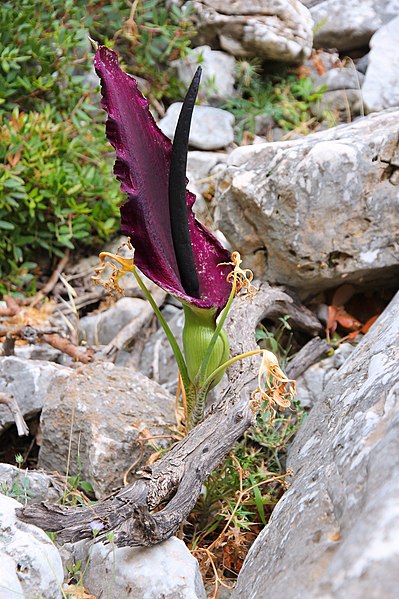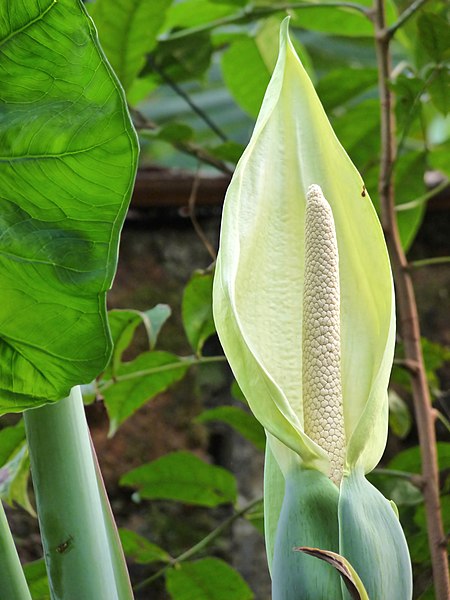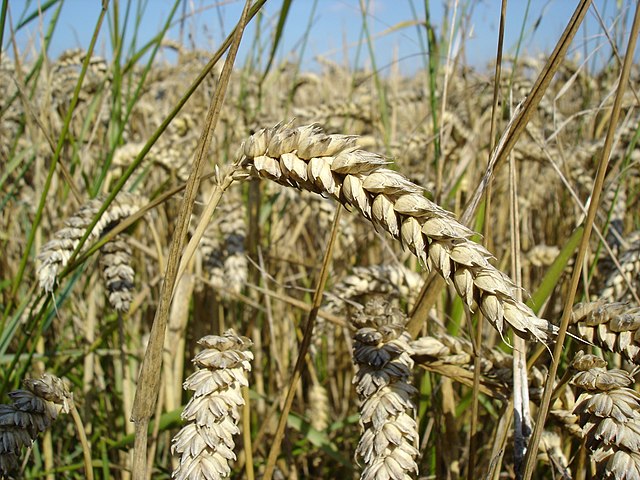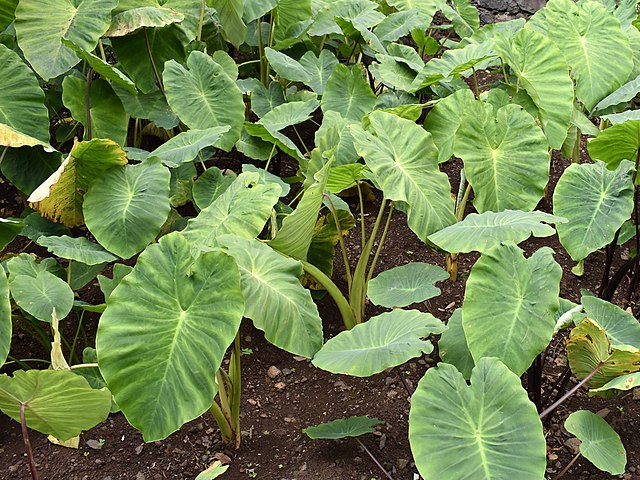The Araceae are a family of monocotyledonous flowering plants in which flowers are borne on a type of inflorescence called a spadix. The spadix is usually accompanied by, and sometimes partially enclosed in, a spathe. Also known as the arum family, members are often colloquially known as aroids. This family of 140 genera and about 4,075 known species is most diverse in the New World tropics, although also distributed in the Old World tropics and northern temperate regions.
Araceae
Snake lily (Dracunculus vulgaris) in Crete
Arrowleaf elephant ear (Xanthosoma sagittifolium), clearly showing the characteristic spadix and spathe
The cuckoo-pint or lords and ladies (Arum maculatum) is a common arum in British woodlands.
Monocotyledons, commonly referred to as monocots, are grass and grass-like flowering plants (angiosperms), the seeds of which typically contain only one embryonic leaf, or cotyledon. They constitute one of the major groups into which the flowering plants have traditionally been divided; the rest of the flowering plants have two cotyledons and are classified as dicotyledons, or dicots.
Image: Wheat close up
Image: Araceae Colocasia esculenta 1
Image: Phoenix Dactylifera Date Palm Fields South Coast Wholesale
Image: Seagrass Zostera marina (Dzharylhach island)








